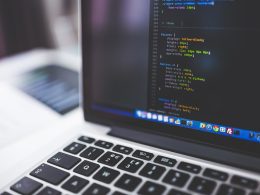1. Understand the error message
The first step in debugging is to understand the error message. Every programming environment or application has its error message format. The error message gives an overview of what is happening in the code and where the problem lies. Don’t overlook the error message, ensure you understand it thoroughly. Be precise to decipher the error and identify the possible cause of the issue.
2. Use a debugger
Debuggers are essential tools used by developers to analyze and identify errors in their code. With a debugger, you can stop the code at designated points, trace the execution path, and observe the values of variables at different stages of the program’s run time. This insight helps developers understand how the program works, which makes it easier to identify and fix the issue. Most programming environments like Python and Visual Studio Code come with a debugger integrated. Utilizing the debugger makes the debugging process more efficient and orderly.
3. Divide and conquer
Breaking down the code into manageable parts makes it easier to identify the cause of the problem. If you are working on a large project, don’t try to debug the entire project at once. Instead, start by testing smaller portions of the code until you can narrow down the problem. Make this process a habit, especially for complex programs.
4. Check for syntax errors
Syntax errors are the most common type of error that occurs in programming. Syntax errors typically arise when the code is not correctly written or structured. Syntax problems lead to errors that indicate an unexpected element in the code. Improve your ability to write clean, structured, and understandable code to avoid syntax errors.
5. Check variable values
During the debugging process, it’s important to check the value assigned to the variables created in the program. Since the variables are the building blocks of the program, checking if the values in the variables are correct or not can help you understand and solve the issue quickly.
6. Use print statements
Print statements are one of the quickest ways to test and debug your code. Placing print statements at critical points in the program can help you monitor the program execution in real-time. This approach can help you trace how the program execution flows and identify the problem.
7. Pair programming
Another useful method to solve programming errors is pair programming, involving two people working together on the same codebase. This technique allows one person to spot the errors while the other person codes. This is especially useful when developing complex applications.
Conclusion
Debugging is an essential skill that every programmer needs to possess. No matter how good your coding skills are, bugs can happen. It’s your ability to identify and fix these errors that make you a pro. Utilize the techniques and tools discussed in this article to enhance your debugging skills. Remember to always take your time when debugging, don’t rush and always check your assumptions. With practice, you too can solve programming errors like a pro.









